
Focus on Fluorine containing new materials,Fluorine medicine,Pesticide intermediate,Production and sales
Changzhou Jiayuan Chemical Co., Ltd. was established in 2015, with its headquarters located in Jinsha Financial Center, Jintan District, Changzhou City, Jiangsu Province. The company adheres to technological innovation and has been committed to cooperating with well-known domestic fluorine chemical research institutes since 2015, focusing on the research and development of fluorine chemistry, the production of fluorine containing new materials, and international trade as an entity and trade enterprise.The company can stably achieve the supply of organic fluorine products: 3500 tons/year of trifluoroethylene (CTFE), 1000 tons/year of octafluorocyclobutane (C318), 2000 tons/year of OEM processing of polyfluoroethylene propylene (F46), 300 tons/year of OEM processing of hexafluoroethylene oxide, 300 tons/year of perfluorohexanoic acid, and 300 tons/year of ethyl difluorobromoacetate.The company can stably supply inorganic fluorine products: 6000 tons/year of electronic grade potassium fluoride, 1000 tons/year of electronic grade magnesium fluoride, 1000 tons/year of electronic grade lithium fluoride, 600 tons/year of toothpaste grade sodium fluoride, and 1500 tons/year of trifluoromethylbenzene.Through several years of continuous innovation and development, the company has entered a track of balanced development in the upstream and downstream of the fluorine chemical industry chain. The company has extensive cooperation with leading enterprises in the fluorite mining industry chain in Myanmar, Inner Mongolia, and Liaoning, forming a complete fluorite chemical industry chain based on fluorite.We have a professional sales team and technical service team, providing customers with high-quality fluorine chemical products, good technical support, and a sound after-sales service system. Adhering to the principle of "customer first, integrity first", we provide high-quality products and services and work hand in hand with customers. Welcome domestic and foreign enterprises/companies/institutions to establish long-term cooperative relationships with our company.





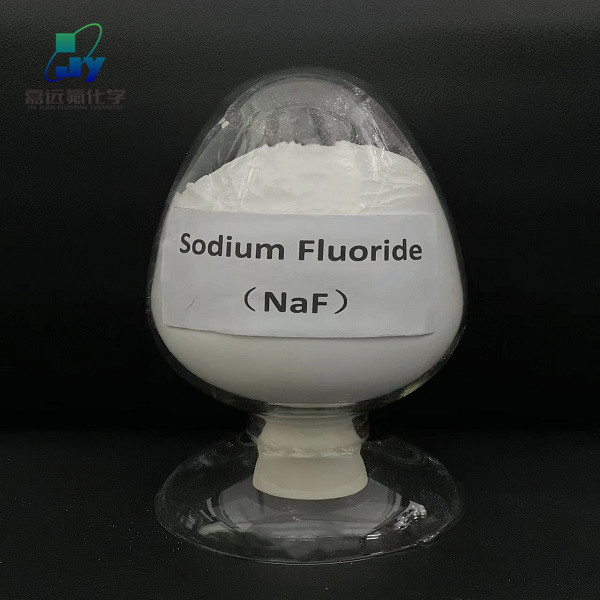
Sodium fluoride ( FNa )

Sodium fluoride ( FNa )
More +
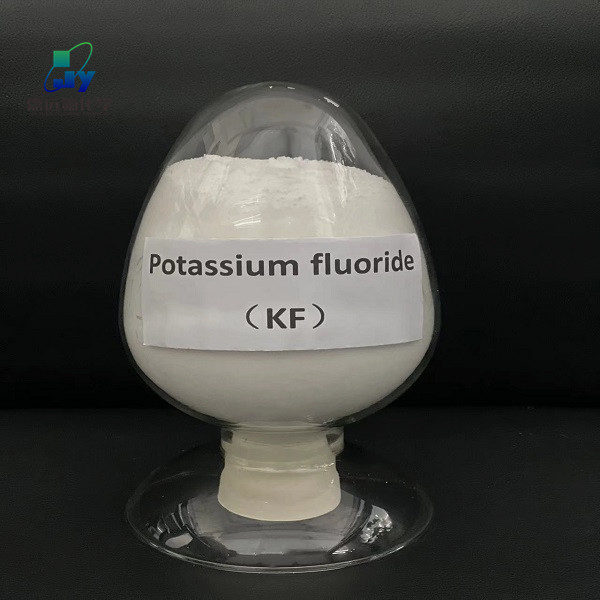
Potassium fluoride/POTASSIUM FLUORIDE(FK)

Potassium fluoride/POTASSIUM FLUORIDE(FK)
More +
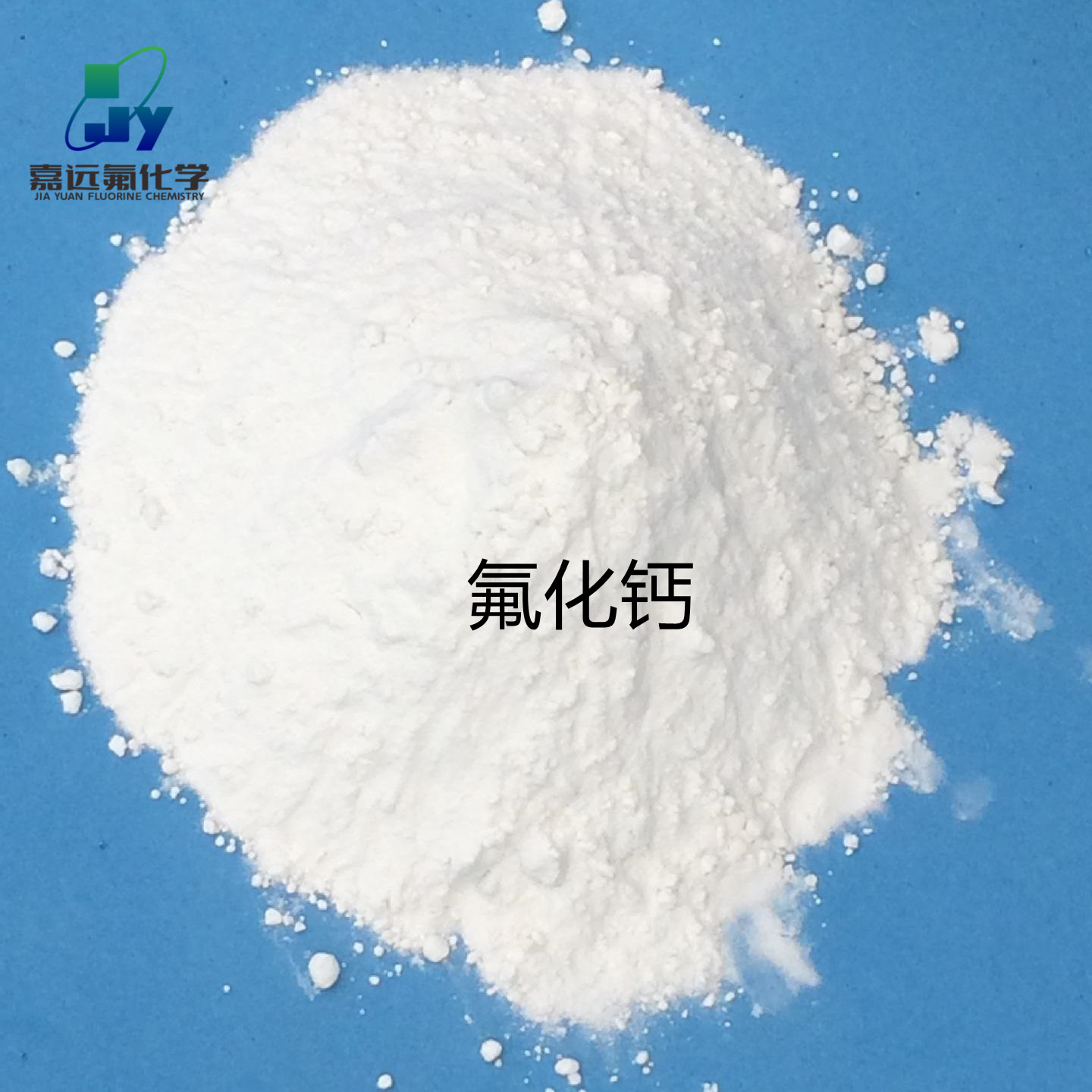
Calcium fluoride

Calcium fluoride
More +
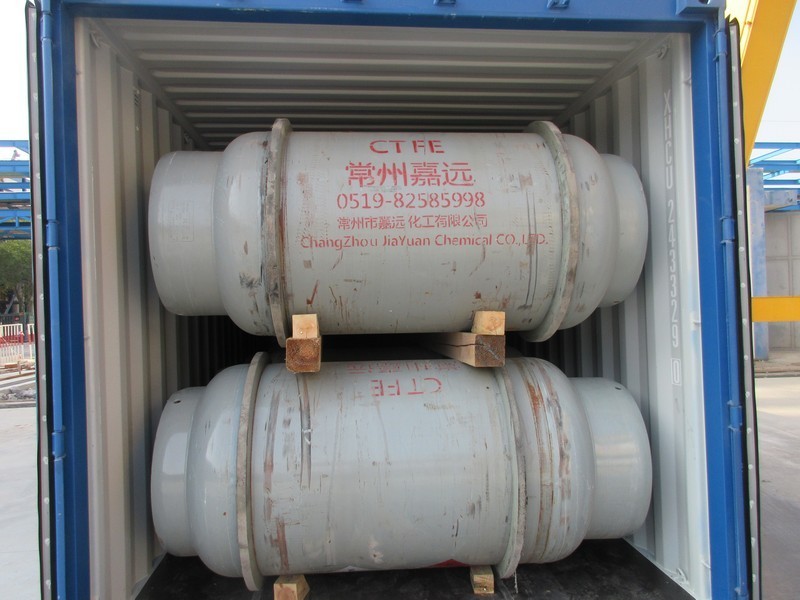
chlorotrifluoroethylene ctfe

chlorotrifluoroethylene ctfe
More +
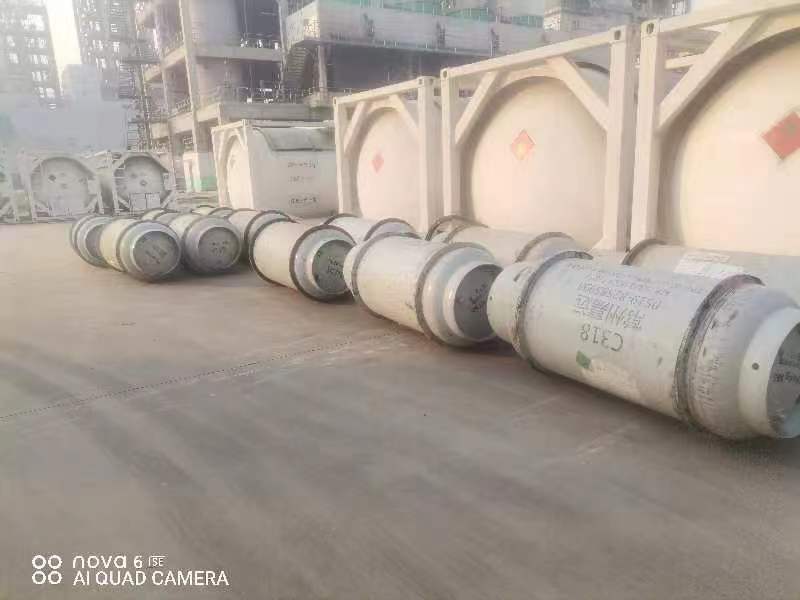
Octafluorocyclobutane(C318、C4F8)CAS:115-25-3

Octafluorocyclobutane(C318、C4F8)CAS:115-25-3
More +

Xenon gas

Xenon gas
More +
cooperative partner
Create a better tomorrow with Jiayuan Chemical

2,3,5-Trifluoropyridine: A rising star in the fields of medicine and materials, leading the innovative application of fluorinated compounds
一、IntroductionRecently, the fluorine-containing fine chemical 2,3,5-trifluoropyridine has become a hot topic in the research and development of medicine, pesticides and high-end materials due to its unique chemical properties and wide application potential. Industry analysis points out that this compound is promoting technological innovation in multiple industries with its high activity, stability and selectivity given by fluorine atoms, and has broad market prospects in the future. 二、Pharmaceutical field: the “key puzzle piece” of innovative drugsIn pharmaceutical research and development, 2,3,5-trifluoropyridine is widely used as a core intermediate to construct small molecule targeted drugs. The introduction of fluorine atoms can significantly improve the metabolic stability and membrane permeability of drug molecules, especially in the fields of anti-cancer, anti-viral and central nervous system disease treatment.In addition, the application of 2,3,5-trifluoropyridine in radiopharmaceutical labeling has also attracted much attention. Its pyridine ring structure can efficiently coordinate with metal isotopes, providing new ideas for the development of integrated drugs for precise diagnosis and treatment of tumors.三、Agrochemical Industry: The “Efficient Engine” of Green PesticidesIn the field of agricultural chemicals, 2,3,5-trifluoropyridine has become the key to the synthesis of new insecticides and fungicides. Fluorine-containing groups can enhance the selectivity of pesticides for target organisms and reduce the risk of environmental residues.四、High-end materials: the "invisible driving force" of the electronics industryIn the field of materials science, derivatives of 2,3,5-trifluoropyridine are breaking through the boundaries of traditional applications. Its fluorinated structure can give liquid crystal materials faster response speed and wider temperature application range, and is used in the manufacture of flexible display panels. In addition, as a fluorinated polymer monomer, this compound exhibits excellent high temperature resistance and corrosion resistance in lithium-ion battery electrolytes and semiconductor packaging materials.五、Market Outlook: Policy and Technology DrivenAccording to the Global Market Insights report, the market size of fluorinated fine chemicals is expected to exceed US$12 billion in 2028, with a compound annual growth rate of 6.5%. As a high value-added product, 2,3,5-trifluoropyridine has particularly active capacity expansion plans in emerging markets such as China and India.六、Conclusion "The innovative application of fluorine-containing compounds is the core track of future fine chemicals." Experts from the Institute of Chemistry of the Chinese Academy of Sciences pointed out, "The multi-field breakthroughs of 2,3,5-trifluoropyridine not only reflect the power of molecular design, but also provide key technical support for industrial upgrading under the goal of carbon neutrality." With the continuous optimization of green synthesis processes, this "fluorinated star" may write an industrialization legend in more cutting-edge fields.If you have any needs or questions, please feel free to contact us!
2025-08-15
Potassium fluoride application areas continue to expand, new energy and electronics industries become new growth engines
1. IntroductionRecently, the global chemical and materials industry has been paying more and more attention to potassium fluoride (KF). As an important inorganic fluoride, potassium fluoride has shown diversified application potential in the fields of medicine, new energy, electronic manufacturing and environmental protection technology due to its unique chemical properties. Driven by both technological innovation and market demand, potassium fluoride is extending from traditional fields to high value-added industries, becoming one of the key materials to promote industry upgrading.2. Potassium fluoride has multiple application scenarios1. Pharmaceutical field: the "invisible promoter" of efficient catalysts Potassium fluoride, as an efficient fluorinating agent in organic synthesis, is widely used in the production of anti-tumor drugs, antibiotics and cardiovascular drugs. For example, its role in the molecular structure modification of fluorine-containing drugs is irreplaceable. A domestic pharmaceutical company recently announced that by optimizing the potassium fluoride catalytic process, it has successfully increased the synthesis efficiency of a certain targeted drug by 30%, significantly reducing production costs. 2. New energy track: New breakthrough in lithium battery electrolyte additives As the global energy transition accelerates, potassium fluoride is emerging in the field of lithium-ion batteries. Studies have shown that electrolytes containing potassium fluoride can effectively improve the high-temperature stability and cycle life of batteries. A leading Japanese battery company has launched a related pilot project and is expected to achieve commercial application in 2025. 3. Electronic materials: core raw materials for precision etching and coating In semiconductor and photovoltaic panel manufacturing, potassium fluoride is used in glass etching and thin film deposition processes. The demand for its high-purity products (≥99.9%) has surged with the expansion of 5G and AI chip production capacity. According to industry reports, the global electronic-grade potassium fluoride market size will increase by 18% year-on-year in 2023, with Chinese manufacturers accounting for more than 40% of the market share. 4. Environmental protection technology: the "green guard" of industrial wastewater treatmentPotassium fluoride has performed well in the treatment of heavy metal-containing wastewater. The new potassium fluoride composite precipitant developed by a European environmental protection company can increase the removal rate of pollutants such as lead and cadmium to 99.5%, and the treatment cost is 25% lower than that of traditional solutions. It has now obtained the EU Ecolabel certification.3. Market demand surges, with Asia-Pacific leading the world According to Grand View Research data, the global potassium fluoride market will reach US$870 million in 2023 and is expected to exceed US$1.4 billion in 2030, with a compound annual growth rate of 6.5%. Among them, the Asia-Pacific region benefits from the cluster effect of the new energy industry chain and the expansion of the electronics manufacturing industry, accounting for more than 55% of the demand. China, South Korea and India have become the main growth poles, and many international chemical giants have announced the expansion of high-purity potassium fluoride production lines in China.4. Give equal weight to technological innovation and safety regulationsDespite the promising prospects, the corrosiveness and environmental risks of potassium fluoride still need to be vigilant. Industry experts emphasize that companies need to upgrade their production safety processes simultaneously. For example, the "microencapsulated potassium fluoride" technology developed by a German company can significantly reduce dust hazards during transportation and use, and has now entered the patent layout stage. In addition, ISO will release a new version of the international standard for fluoride treatment in 2024 to further regulate industry operations.5. Expert opinions"The cross-border application of potassium fluoride confirms the transformation and upgrading path of basic chemicals," said the Secretary-General of the China Fluorine and Silicone Organic Materials Industry Association. "Future industry competition will focus on high-end and green solutions. Enterprises need to increase collaborative innovation with universities and research institutions, while building a circular economy model to reduce environmental impact throughout the life cycle."VI. Conclusion From the laboratory to the production line, potassium fluoride is opening up new growth space with its "one material, multiple uses" characteristics. Driven by the carbon neutrality goal and the scientific and technological revolution, this traditional chemical may write a new chapter in the industry. How to balance technological innovation, market demand and sustainable development will become the core issue of the industry in the next stage. As a mainstay enterprise in the field of fluorine chemistry, Jiayuan should keep up with the times and market development trends, improve product quality and enhance its own competitiveness.(Note: The data in this article are all derived from public industry reports and official corporate information.)2025-08-15
Magical sodium trifluoromethanesulfinate: small substance, big energy
In the wonderful world of chemistry, there are many substances that have difficult names but play an indispensable role in various fields. Sodium trifluoromethanesulfinate is one of them. Its chemical formula is CF₃SO₂Na, and its CAS number is 2926-29-6. It is also often called sodium trifluoromethanesulfinate. You may be unfamiliar with it, but it has actually penetrated into many aspects of our lives. From the perspective of properties, sodium trifluoromethanesulfinate is quite stable as long as it is used and stored under specified conditions. Its birth is the result of a series of carefully designed chemical reactions. For example, in a specific reactor, raw materials such as water, flake caustic soda, trisodium phosphate, hydrosulfite, acetonitrile and trifluorobromomethane gas react under precisely controlled temperature, pressure and time conditions, and then undergo stratification, extraction, desolventization, drying and other steps to finally obtain this magical substance.Sodium trifluoromethanesulfinate is a star reagent in the field of organic synthesis. It is a powerful assistant for the introduction of trifluoromethyl. Since trifluoromethyl has strong electron-withdrawing properties, lipophilicity and stable C-F bonds, when it is introduced into organic compounds, it can significantly change the acidity, dipole moment, polarity, lipophilicity, and chemical and metabolic stability of the compound. Scientists use it to achieve trifluoromethylation of aromatic hydrocarbons, giving ordinary aromatic hydrocarbon molecules unique properties and laying the foundation for the research and development of new materials; it also participates in difunctionalization reactions, like a magical architect, building organic molecules with diverse structures and expanding the boundaries of organic synthesis; in trifluoromethylthiolation reactions, it also plays a key role, providing the possibility for the synthesis of trifluoromethylthio compounds, and such compounds have great potential in the synthesis of pharmaceuticals, pesticides and functional materials. In the field of battery materials, it is an unsung hero. As a key raw material for the synthesis of lithium bis(trifluoromethanesulfonyl)imide (LiTFSI), it indirectly promotes the development of lithium-ion battery technology. LiTFSI has the advantages of high ionic conductivity, good thermal stability and chemical stability. It is an important component of lithium-ion battery electrolyte and is widely used in mobile phones, laptops, electric vehicles and other devices, making our electronic devices last longer and electric vehicles run farther.The pharmaceutical field is also inseparable from sodium trifluoromethanesulfinate. As a pharmaceutical intermediate, it participates in the synthesis of a variety of fluorine-containing drugs. These fluorine-containing drugs have shown unique therapeutic effects in the treatment of cardiovascular diseases, tumors, and nervous system diseases, bringing hope to countless patients. For example, some drug molecules containing trifluoromethyl can bind to biological targets more accurately, improve the efficacy and selectivity of drugs, and reduce damage to normal human cells.With the continuous advancement of science and technology, I believe that sodium trifluoromethanesulfinate will play a greater role in more fields and bring more surprises to our lives. In the future, scientists may be able to tap into its more potential value and make this small chemical shine even brighter.The high-quality sodium trifluoromethanesulfinate (CF₃SO₂Na) produced by Jiayuan has core advantages such as high purity and stability , advanced technology and consistency , compliance and certification , and can provide customers with excellent value . We are committed to providing high-quality products and services, and hope to become your trusted partner! Welcome to consult at any time!2025-08-15
Hexafluoroisopropanol: a "magic molecule" hidden in life
HFIP, or hexafluoroisopropanol, is a toxic, colorless liquid with high polarity that can dissolve a variety of organic and inorganic substances. It is often used as a solvent for dissolving polyamides and esters, and is also used to analyze nylon.Basic definition and chemical properties of HFIPHexafluoroisopropanol (HFIP) is an important fluorine-containing fine chemical with a chemical formula of C3H2F6O and a molecular weight of 168.04. HFIP is a colorless, transparent liquid with high polarity that can easily dissolve a variety of organic and inorganic substances. Its boiling point is 59°C, melting point is -40°C, and density is 1.596g/mL (25°C). HFIP exhibits strong hydrogen bond donation ability and can effectively activate oxygen-containing functional groups such as carbonyl groups. At the same time, HFIP has a low pKa value (9.3), showing a certain weak acidity. At room temperature and pressure, HFIP is very stable, but it should be avoided from contact with redox chemicals to prevent other chemical reactions.Preparation method of HFIPThe preparation methods of HFIP mainly include gas phase method and liquid phase method. The gas phase method has a fast reaction speed, but the reaction temperature is high and side reactions are prone to occur. The liquid phase method is to combine hexafluoroacetone (HFA) with water to form hydrates containing different water, and then perform liquid phase catalytic hydrogenation reaction on them. This method can be carried out at a lower temperature and has a higher reaction efficiency. In the preparation process, expensive catalysts are usually used, and it is necessary to pay attention to impurities such as hydrogen fluoride and hydrogen chloride that may be contained in the raw materials to prevent catalyst poisoning.Main application areas of HFIP As a highly polar solvent, HFIP has a wide range of applications in many fields. It can be used to prepare a variety of fluorinated chemicals such as fluorinated surfactants, fluorinated emulsifiers, and fluorinated medicines. In addition, HFIP can also be used as a good solvent to improve reaction efficiency and control the stereoselectivity of products in organic synthesis. In the pharmaceutical industry, HFIP is used as an intermediate in the synthesis of the inhalation anesthetic sevoflurane. This innovative drug is highly favored by the market for its advantages such as no residue, fast anesthesia induction and awakening speed, and controllable anesthesia depth.Specific applications of HFIP in specific industriesPharmaceutical IndustryIn the pharmaceutical industry, HFIP is mainly used to synthesize the inhalation anesthetic sevoflurane. Sevoflurane is an anesthetic with excellent performance. Its advantages such as no residue, fast anesthesia induction and awakening, and controllable anesthesia depth make it widely used in clinical practice.Materials ScienceIn the field of materials science, HFIP's strong solubility makes it perform well in plastic recycling. It can effectively dissolve plastics mixed with pollutants and metal ions, and extract the purest plastics through liquid separation and solvent extraction processes. In addition, HFIP's low density, low viscosity and low surface tension make it exhibit superior solubility properties in polymerization reactions.Safety and storage considerations for HFIPHFIP is toxic and harmful to the human body, especially the respiratory system. When using it, appropriate safety measures should be taken, such as wearing appropriate protective clothing, gloves and goggles or masks to avoid direct contact. If it comes into contact with the eyes accidentally, rinse them immediately with plenty of water and seek medical advice. In terms of storage, HFIP should be stored in a cool, ventilated warehouse, and the storage temperature should not exceed 37°C. At the same time, it should avoid contact with prohibited substances such as oxidants, and keep the container sealed.Market Trend and Development Prospects of HFIPWith the advancement of science and technology and the development of industrialization, the market demand for HFIP, as an important fluorine-containing fine chemical, continues to grow. Especially in the fields of medicine and materials science, the application prospects of HFIP are very broad. At the same time, the improvement of environmental protection requirements will also promote the application of HFIP in the fields of plastic recycling. Therefore, it can be predicted that the market trend of HFIP will maintain a growth trend and show broad development prospects.Jiayuan is a professional manufacturer of hexafluoroisopropanol (HFIP) integrating R&D, production and sales. We have advanced production equipment, a complete quality inspection system and an experienced technical team. We always adhere to the business philosophy of survival by quality and development by reputation, and are committed to providing customers with high-quality, high-purity and cost-effective hexafluoroisopropanol products.Choose us, you will get:Professional technical support: We have an experienced technical team that can provide you with a full range of services such as product selection, application guidance, technical consultation, etc. to help you solve technical problems and optimize production processes.Perfect after-sales service: We promise to provide perfect after-sales service, establish customer files, conduct regular customer return visits, promptly resolve problems you encounter during use, and provide you with a safe and secure purchasing experience.We welcome new and old customers to call or write to us for consultation and purchase. We will wholeheartedly provide you with high-quality products and services!2025-04-23
Aluminum Fluoride Market Overview in 2024
Aluminum fluoride (AlF3) is a white powder mainly used as an additive in the production of primary aluminum metal. It essentially lowers the melting point of the alumina raw material and, together with cryolite, increases the conductivity of the electrolyte solution, thereby reducing power consumption. Aluminum fluoride is also used as a catalyst in organic synthesis and a raw material for synthesizing cryolite. Overall, the aluminum fluoride industry is in the mature stage, mainly a B2B business model, with relatively mild market competition and high industry entry barriers due to high technical requirements. On the upstream side, one of the important raw materials for aluminum fluoride is fluorite. Fluorite, the crystal form of calcium fluoride, is a halide mineral that crystallizes as an equiaxed cube. Fluorite is transparent in both visible and ultraviolet light when pure, but due to the presence of defects, it is often used as a multi-colored gemstone in decorative and gem applications. In addition to these modest uses, fluorite is also used to produce products made from fluorocarbons to weld steel, aluminum, and roads. In the past, fluorocarbon-based compounds were also used to make chlorofluorocarbons (CFCs). Due to the environmental restrictions of CFCs, fluorite-based HCFCs have replaced its role. China is the world's largest fluorite producing area, followed by Mexico, Mongolia, South Africa and other countries. The main domestic fluorite distribution is concentrated in Mongolia, Zhejiang, Hunan, Jiangxi and other places. Driven by demand, China's fluorite production accounts for a large proportion of the world, and the global and Chinese fluorite production has steadily increased since 2018.The reserve-to-production ratio of fluorite resources in the world and China is lower than that of rare earth and graphite. According to USGS data, Chinese fluorite has the characteristics of "low reserves and high production". China's fluorite reserves account for 13.2% of the world's total, while its production accounts for nearly 60%. The main fluorite consumption areas, such as the United States, Western Europe and Japan, have exhausted their fluorite resources and basically rely on imports.In the production of aluminum fluoride, it can be divided into dry AlF3, anhydrous AlF3, and wet AlF3 according to the preparation method. At present, the global aluminum fluoride is mainly dry aluminum fluoride and anhydrous aluminum fluoride, and wet aluminum fluoride is gradually being eliminated. In 2023, the market size of dry AlF3 has reached 63.97%, occupying an absolute dominant position. Dry AlF3 has become the first choice for various industrial applications due to its higher purity and better performance characteristics, especially in aluminum production. With excellent characteristics of consistency and efficiency in reducing energy consumption and improving electrolytic processes, dry AlF3 has become a more cost-effective and reliable choice for manufacturers. At the same time, the current aluminum fluoride production technology focuses on anhydrous aluminum chloride production technology that complies with low-carbon policies and has high resource utilization. Taking Duofuduo as an example, its innovative process "efficient utilization of low-grade fluorine silicon resources" anhydrous aluminum fluoride preparation technology can use low-grade fluorite, quartz sand, etc. as raw materials, broadening new ways to comprehensively utilize low-grade fluorine silicon resources, while also less environmental pollution. By using the anhydrous aluminum fluoride preparation technology that efficiently utilizes low-grade fluorine silicon resources, the production cost has been reduced by about RMB 1,000/ton, and the company's dominant position in the industry has been further consolidated.In terms of downstream applications, the aluminum fluoride market can be divided into aluminum industry, ceramic industry, and others. The aluminum industry segment brought in more than 90% of the market revenue and will grow at a CAGR of 1.03% during the forecast period. This huge market share is mainly attributed to the key role played by aluminum fluoride (AlF3) in aluminum production. AlF3 is essential in the electrolytic process of aluminum smelting, which can reduce the melting point of alumina and improve process efficiency and energy consumption. The widespread use of aluminum in various industries such as automotive, aerospace, construction, and packaging has driven the growing demand for aluminum across the globe, further consolidating the dominance of the aluminum industry.Global aluminum fluoride market maintains fluctuating growthAccording to data survey data, the global aluminum fluoride market size is expected to increase from US$1.683 billion in 2023 to US$1.856 billion in 2030, with a compound annual growth rate of 1.35% during 2024-2030. The overall growth of the aluminum industry itself directly increases the demand for aluminum fluoride, which is a key agent in the aluminum smelting process. Secondly, the demand for lightweight materials in various industries, especially automotive and aerospace, is increasing, and the use of aluminum is also increasing due to its strength and light weight. Urbanization and infrastructure development, especially in emerging economies, are pushing up the demand for aluminum in construction, further driving the development of the aluminum fluoride market. Finally, the technology of aluminum fluoride products continues to make breakthroughs, and the improvement of product performance has expanded the application field. In terms of the application of aluminum fluoride in the field of new energy, the application of aluminum fluoride products in new energy fields such as new energy vehicles, wind energy, and solar energy is increasing. In the production process of solar cells, aluminum fluoride has a low melting point and good thermal stability, which can promote the melting and mixing of solar cell materials at a lower temperature, reduce the lattice defects of solar cells, increase carrier mobility, and thus improve the conversion efficiency of solar cells.On the other hand, the future growth of the electrolytic aluminum industry is limited. The electrolytic aluminum production capacity of major industrial countries in the world is close to the limit. For example, as of June 2023, China's electrolytic aluminum production capacity has reached 44.711 million tons, and the operating capacity is 41.648 million tons, an increase of 1.85% year-on-year and 1.38% month-on-month, which is gradually approaching the production capacity limit. At the same time, electrolytic aluminum is a high-energy-consuming variety, which is inconsistent with the important strategy of global low-carbon transformation. The growth of the electrolytic aluminum industry will also be restricted by low-carbon policies.Industry competition landscapeFrom the perspective of industry competition, according to data, the market concentration indexes CR5 and HHI of the global aluminum fluoride market will reach 40.62% and 4.11% respectively in 2023. This shows that the top companies control the market to a certain extent, but the market still maintains a fierce competitive environment, and smaller players also have opportunities. The leading companies in the market are mainly in China, contributing most of the production capacity and sales.Changzhou Jiayuan Chemical Co., Ltd. is a high-tech enterprise specializing in the research and development, production and sales of aluminum fluoride. The company has advanced production equipment and a complete quality management system. The product quality is stable and reliable, and is deeply trusted by domestic and foreign customers.The aluminum fluoride produced by our company has the following advantages:High purity: The main content is as high as 99.95 %, and the impurity content is low, meeting the needs of different application fields.Uniform particle size: Using advanced crushing and grading technology, the product particle size distribution is uniform and has good fluidity.Stable quality: Strictly control every link in the production process to ensure stable and reliable product quality.Favorable price: Large-scale production has obvious cost advantages and provides customers with cost-effective products.Thoughtful service: Provide comprehensive technical support and after-sales service to resolve customers' worries.2025-04-23




















